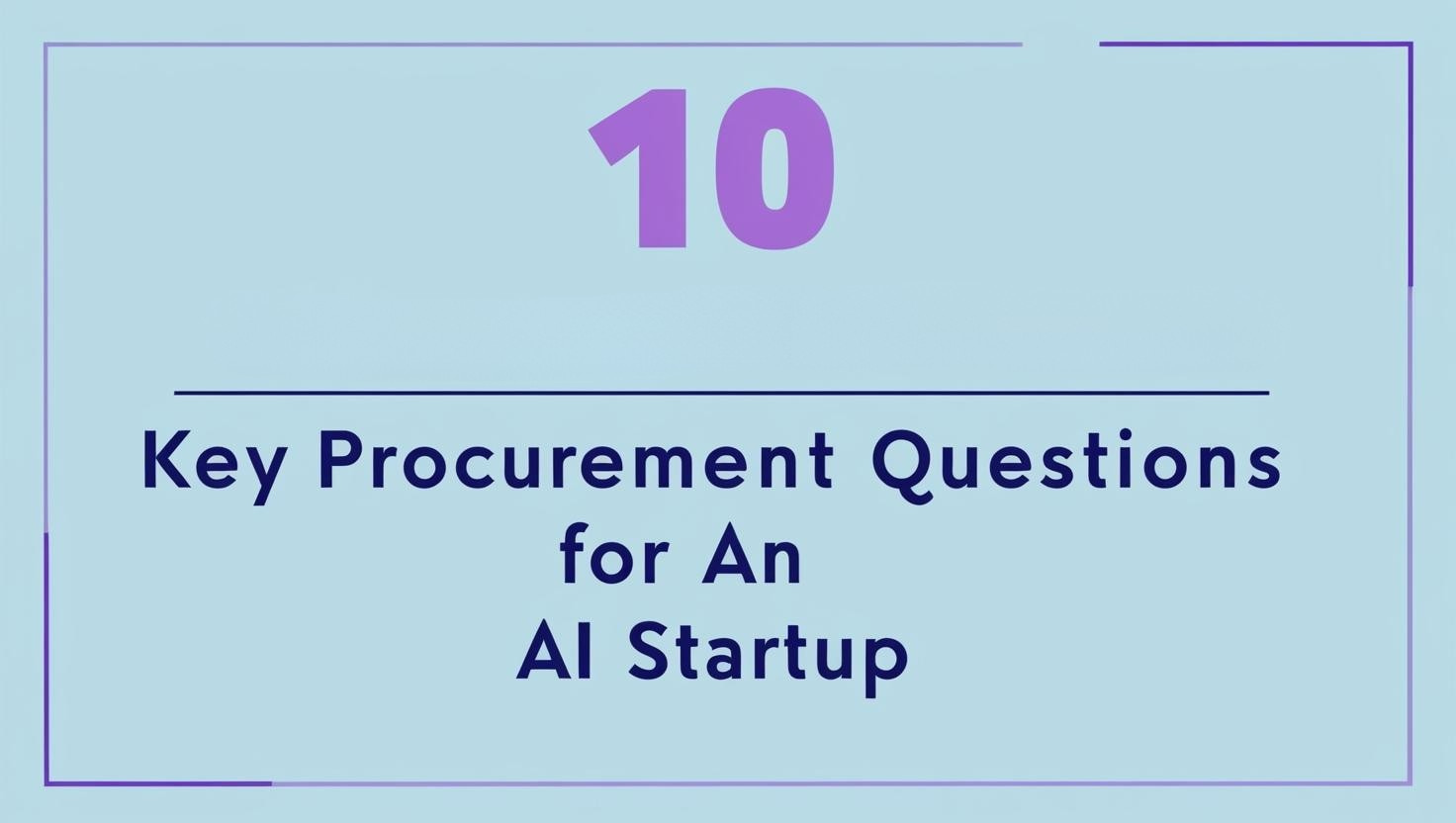Enterprise buyers now treat AI governance the same way they treat GDPR or SOC 2. If you cannot answer these ten questions (and show one or two simple pieces of evidence), deals stall.
The good news: a lean startup can get everything ready with one focused afternoon of work.
Why This Matters for Startups
- Investors and buyers are asking AI‑risk questions six to twelve months earlier than founders expect.
- Heavy compliance platforms are overkill at seed stage.
- A small set of clear policies plus lightweight evidence covers roughly 80 per cent of due‑diligence checklists.
| # | Question You Will Hear | Quick‑Win Answer | Show This Evidence |
|---|---|---|---|
| 1 | What data did you train on | Public datasets X and Y plus anonymised customer data. See Data Register | Data Register or Model Card |
| 2 | How do you prevent bias | Quarterly bias scan using chosen metric. Last audit completed within 30 days | Bias and Fairness Policy and most recent audit log |
| 3 | Can you explain your model’s decisions | SHAP values surfaced in dashboard; PDF explanation available on request | Explainability Procedure |
| 4 | Who reviews or overrides the AI | Human in the loop for high‑impact outputs. Escalation time under 24 hours | Responsible AI Use Policy |
| 5 | What happens when the model fails | Three‑step incident plan: detect, notify, roll back. Average recovery 30 minutes | Incident Response Playbook |
| 6 | Where is customer data stored and encrypted | AWS us‑east‑2, AES‑256 at rest, TLS 1.2 in transit. Retention 90 days | Data Privacy and Security Policy |
| 7 | How often do you test accuracy | Weekly drift check; retrain threshold at two per cent performance drop | Model Monitoring Log |
| 8 | Which third‑party AI services do you use | Listed in Third‑Party AI Register and reviewed quarterly | Third‑Party AI Register |
| 9 | Are you aligned with any frameworks | Mapped to NIST AI RMF and EU AI Act Annex IV | Framework Mapping Sheet |
| 10 | Can we see everything in one place | Yes, here is our public TrustCenter link | TrustCenter URL |
Five Must‑Have Startup Policies
- Responsible AI Use Policy – purpose, human oversight rules, unacceptable uses.
- Data Privacy and Security Policy – storage, encryption, retention, deletion SLAs.
- Bias and Fairness Policy – metrics, testing cadence, mitigation workflow.
- Explainability and Transparency Policy – methods, when explanations are required, user communications.
- Incident Response Playbook – who does what when a model misbehaves or data is breached.
Time‑Saver: Draft each policy with the Cognitiveview AI Policy Assistant, review, then publish to your TrustCenter.
Total effort about five minutes per policy.
Startup‑Friendly Process Documents
- Data Register – table of datasets, source, owner, legal basis.
- Third‑Party AI Register – every external API or model you call, risk score, last review date.
- Monitoring Dashboard Screenshot – proof that you track drift and usage.
Attach or embed these in your Cogntiveview TrustCenter so buyers do not have to request them.
How to Prepare in One Afternoon
- Run a thirty‑minute self‑assessment to capture gaps.
- Generate all five policies with the AI Policy Assistant.
- Fill in the two registers for data and third‑party tools.
- Take a monitoring screenshot from your MLOps tool.
- Publish everything to your TrustCenter and share the link on your next call.
Total time about two hours. The payoff is a credibility boost at your next procurement meeting.
Key Takeaway
Enterprise procurement is not looking for a one‑hundred‑page governance manual. They want clear answers and proof that you take AI risk seriously. With five concise policies, three short registers, and the AI Policy Assistant doing the heavy lifting, any startup can meet buyer expectations and keep deals moving.
Need a jump‑start?
The CognitiveView AI Governance Starter Pack generates each policy, runs the self‑assessment, and hosts your TrustCenter in a single afternoon.
Which procurement question has tripped you up the most?

